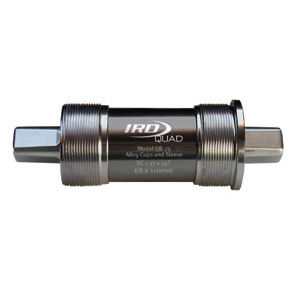Essex course given thumbs up by UCI
Construction began in July and is expected to be finished in the spring of 2011. The venue consists of open, grassy hillsides and has few natural technical features.
"It is fantastic to be able to see the course taking shape as our Olympic dream becomes a reality," said Essex County Councillor Stephen Castle, Cabinet Member for the 2012 Games. We are committed to delivering a first class London 2012 Olympic discipline and a course that will test the world's finest Mountain Bike riders. I look forward to seeing further developments as we get closer to the 2012 Games."
Hadleigh Farm was chosen to host the mountain bike racing after the originally proposed course in Weald Country Park was rejected in 2008 as not challenging enough.
The UCI's Technical Delegate Peter Van den Abeele said, "Following a recent visit to the ... venue, we are extremely happy with the work that is happening on site. Great progress has been made which reflects exactly where we want to take the sport over the coming years, making the course more accessible to spectators and improving television images. We are confident that the combination of technical climbs and steep rocky descents will provide a stunning, challenging course for mountain biking and that it will be a great event in London 2012."
Organizers have brought in 500,000 tonnes of rock and are building technical obstacles and drops to challenge racers.
The course will have 70m in elevation gain - more elevation change than that of the 2008 Olympic Games in Beijing, China, according to Bike Radar. In total, the course will cost 800,000 pounds to build.
The course, which is on land owned by the Salvation Army and Essex County, will be about 5km in length and is expected to accommodate 20,000 spectators. It is being delivered by Essex County Council in partnership with the London Organising Committee of the Olympic Games and Paralympic Games (LOCOG).
"Hadleigh Farm is a stunning venue, in line with our concept of a compact Games and it will have an excellent legacy. I am very grateful to Essex County Council and to the Salvation Army for their hard work in making this venue happen. The course is shaping up to be a challenging one with multiple climbs and descents. I believe that the mountain bike competition will be one of the most exciting events at the London 2012 Olympic Games," said Sebastian Coe, LOCOG Chair.
"The course is great - much hillier than I expected," said Maddie Horton, who won the silver medal at the 2010 British National Championships, to Breaking Travel News. "I've ridden World Cup courses before, and this is definitely up there with the toughest."
The Olympic distance cross country mountain bike race will take place on August 11-12, 2012. Approximately 50 men and 30 women will compete for Olympic medals in a two-hour race. A pre-Olympic test event is expected to be run on the course as early as the summer of 2011.
Basic tickets for the Olympic mountain bike race are expected to cost 20 pounds and will be available for purchase in March 2012.
A separate legacy plan is being developed for how the venue will be used following the 2012 Games.
Source: cyclingnews.com





